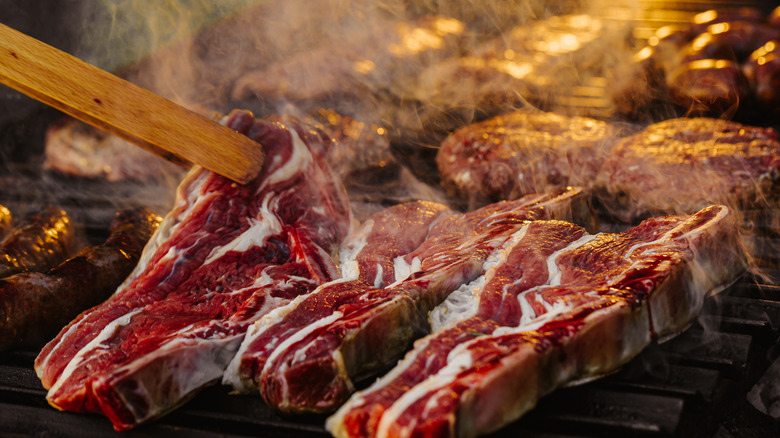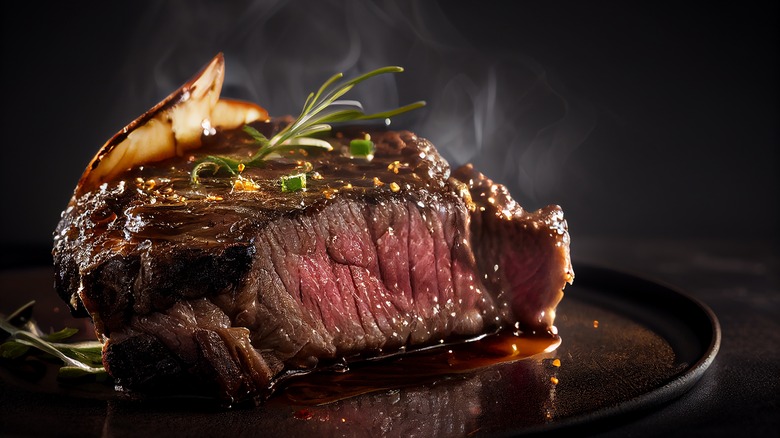The Expert-Approved Tip For Choosing The Best Steak To Smoke
If you're going out of your way to smoke your steak, you ought to make sure you're getting the right cut of meat for the job. As many of you who own smokers are likely aware, smoking beef requires a different approach than grilling. To understand more about what we should be looking for when choosing what steak to smoke, we reached out to David "Papi" Einhorn, Partner at Papi Steak in Miami Beach.
"When choosing beef or steak for smoking, it's important to consider the marbling and thickness of the meat," Einhorn told Tasting Table. Marbling refers to the white streaks of fat that run through the red muscle in beef. The fat on your steak is more important than you might realize since the cooking process will render the fat down. "Cuts with generous marbling tend to be more flavorful and tender," Einhorn said. The last thing you want is to wind up with a dry piece of steak after the hours-long process of smoking. Choosing a cut of steak with high marbling increases your chances of getting it right.
As for the thickness of the cut, you'll want to choose a steak that has some body to it. "Thicker cuts are better suited for slow cooking without drying out." Properly smoked steak is fit for a king, but with big rewards come big risks. Make sure you're avoiding the biggest mistakes people make when smoking steak to ensure your dinner comes out perfectly tender.
How to use marbling and thickness as guidelines for smoking steak
Now that you have the right cut of steak, it's time to start cooking. "It's crucial to go low and slow when smoking meat," Einhorn explained. "And to choose high-quality steaks with good marbling. The low and slow approach allows the steak to absorb the smoky flavor without overcooking." Low and slow is such a core component of smoking meats that it's almost a meme at this point, but there's a reason the approach is as well-known as it is: It inspires you to be patient with the process and keeps you from cranking up the heat to the detriment of the meat.
"It is also essential to maintain a consistent temperature, as cooking temperatures can vary depending on the type of meat," Einhorn went on. "Meats with a higher fat content require a longer cooking time and slightly lower temperature." This is where your knowledge of what steak you just bought comes into play. Knowing how thick your steak is and what degree of marbling it contains is relevant when you purchase it, but it's even more relevant once you start cooking. If you're brand new to smoking beef, you can cut yourself some slack and operate with ballpark estimates since there's already so much to familiarize yourself with. But if you're ready to hone your smoked steak game, take a good gander at your steak's features and adjust your temperature and cook time accordingly.

